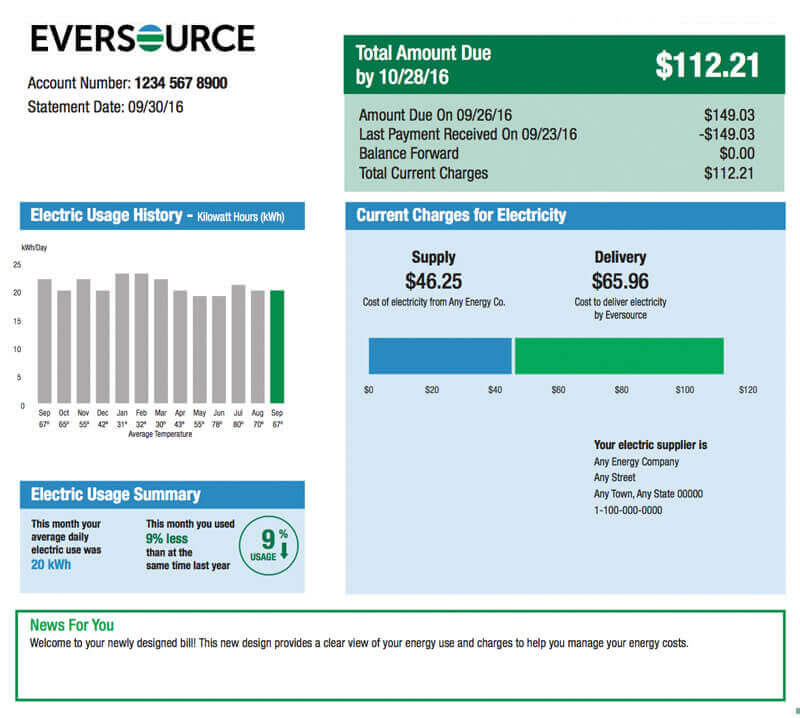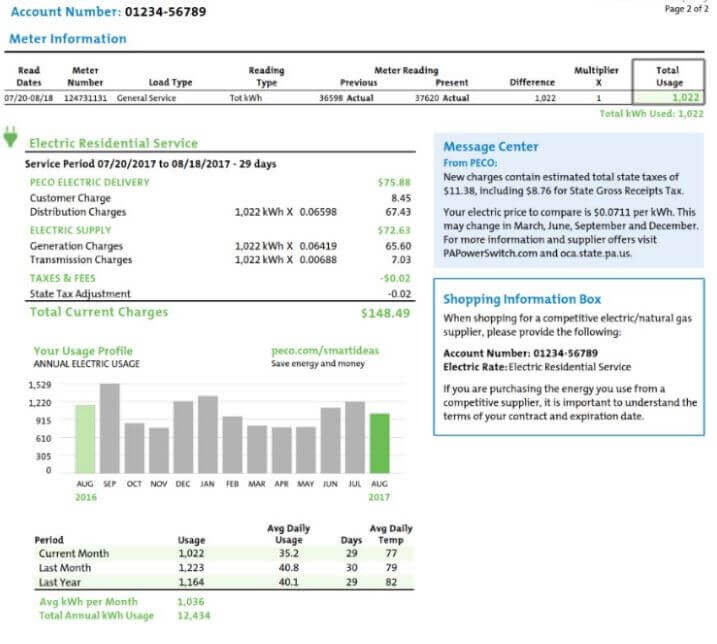What’s electricity usage got to do with it?
Being the electricity geeks that we are, we talk way too much with our customers, friends, and family about the price they’re paying for electricity. For whatever reason, people happen to like to swap stories about their electricity provider and rate.
The conversation usually starts with “Hey, guess what? I just got a <insert ridiculously low rate>,” and usually (unfortunately) ends with a gotcha and a comment about teaser rates, fine print, and usage.
Why is your electricity usage important?
The biggest piece of advice we give to electricity shoppers is to know your historical electricity usage.
This is especially true in markets like Texas. In Texas, the advertised price of electricity is a combination of an energy rate and a delivery rate. The final price you pay is completely dependent on your monthly kWh usage.
Think of your electricity usage sort of like a shoe size: You won’t be happy if you don’t find the proper fit. Knowing your specific historical kWh usage will help you size your plan appropriately.
How does electricity usage factor into rate plans?
One example is tiered rates. Tiered rate plans are appearing in almost all deregulated markets. These plans typically have different rates for different cumulative usage levels per month.
For example, your first 500 kWh per month may be at a certain rate, your next 1000 kWh may be at another rate, and so on. Knowing your historical kWh usage and how it meshes with these tiered rates can help you find the right plan. That way you can avoid an expensive mistake.
This is especially important in a market like Texas where prices are advertised at specific usage levels: 500, 1000 and 2000 kWh. A provider might advertise a amazingly low average price at the 1000 kWh usage level. But, if you use 1001 kWh, the price you pay could more than double with a tiered rate plan.
Similar to tiered rate plans, some providers in Connecticut are now offering electricity plans with annual usage caps. Buried in the fine print are the penalties for going over your usage cap. Knowing your annual usage level can help you calculate your effective price per kWh. Then you can see how these offers compare to your current rate or other more conventional fixed rate plans.
Free Nights and Weekend electricity plans have also become very popular in Texas. These fall into the category of “Time of Use” or TOU plans. The advertised price of free time electricity plans assumes that approximately one-third of energy is consumed during the free time. If your usage pattern is different, your average price per kWh will be higher or lower.
These TOU plans require that you pay significant attention to your energy usage and the timing of that energy usage. Read Do Free Nights and Weekend Electricity Plans Really Save Money? for more details.
Finally, usage also comes into play when considering average billing. If your usage changes dramatically from hot to cold seasons and you are on a fixed income, average billing (also known as balanced billing) may be very helpful. However, if your usage is fairly flat and predictable, you can avoid the credit balance with an electricity provider that typically results from average billing.
How much electricity do you use?
To see how much electricity you have used previously, you can find it several ways:
- Your utility bill. This is probably the easiest since most utilities/providers now include a small graph showing historical usage. This chart may take several forms. Most northern utilities chart an average usage per day by month and may also overlay monthly temperatures. For example:

Another common form is a straightforward chart of your total historical usage by month:

For exact kWh usage levels, the best source is your prior utility bills. Be sure to note the highest and lowest usage month to determine your usage range.
- Your electricity supplier’s website or app. This varies by state, but almost all utilities or electricity providers (or both) now offer usage history in accordance to the Green Button initiative. This history is generally monthly, but some break it down to daily or weekly also. Monitoring your usage via an app is an especially important feature for prepaid customers.
- Calculate your kWh usage. You can calculate your kilowatt hour usage with our energy usage calculator. You’ll need to know the wattage and amount of time you use each device. This will take a pretty significant amount of time.
- Smart Meter Texas. States are increasingly aggregating data into centralized sites for your use. A good example of this is the Smart Meter Texas site. This site displays both your daily (in 15 minute increments) and monthly usage. You can also download your exact usage for use when you are shopping for a new electricity plan. Learn more about this tool in our article about smart meters.

How much can my electricity usage vary?
Electricity usage varies significantly, and it depends on your specific residence, your habits, and factors outside of your control such as weather. As a general rule of thumb:
- Apartment customers tend to use around 500 – 1000 kWh
- Small homes are typically in the 1000-1500 kWh range
- Larger homes can go from 2000 up to 6000 kWh or more per month.
These usage levels can vary significantly depending on factors such as
- Number of residents/family size
- Geographic location
- Home energy efficiency such as insulation and efficient windows
- Energy efficiency of air conditioners, appliances and pool pumps
- Weather – unusually hot or cold seasons.
What if you don’t know your electricity usage?
For new construction, you will initially have to make your best guess. We strongly recommend a basic fixed rate plan without any tiered rates for this situation. Also keep in mind that new homes will tend to be more energy efficient than older homes. That’s due to a tighter “envelope” of construction, and more energy efficient appliances.
For existing homes or apartments, you can always ask the previous homeowner, landlord, or neighbors with similar square footage. The key is to ask what their kWh usage was, not how much their electricity bill was. That’s because the rate they were paying per kWh might be very different than current rates.
For electricity usage, rates and average bills by state, see EIA’s chart for residential electricity by state.
The Bottom Line On Electricity Usage
The next time you shop for electricity, spend a few minutes doing your homework to find your historical kWh usage. Simply knowing your maximum and minimum usage levels, in what months it occurs, and your current energy rate, will help you quickly find the best deal on an electricity plan. Knowing this information can also help you estimate your future energy bills, calculate your expected savings, and avoid expensive mistakes.
